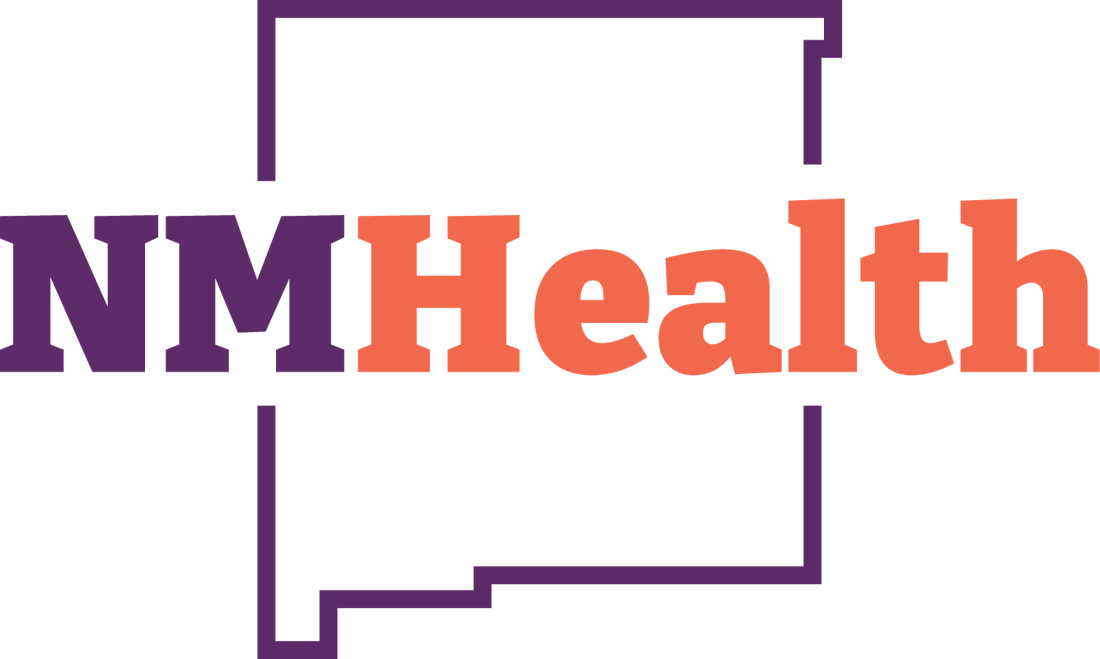Opioid overdose continues to be an urgent public health challenge in the United States and in New Mexico. In 2019, 74% of all overdose deaths involve opioids in New Mexico. Preventable opioid overdose deaths increased 457% since 1999 in the US, which lead public health officials to declare a nationwide opioid overdose epidemic.
Opioids can have adverse reactions and cause harmful and severe reactions that slow or even stop breathing. Because opioids slow or even stop breathing, opioid overdoses can be fatal. Overdose can happen when a person takes too much of the opioid medication, when a person mixes an opioid with another substance, like alcohol or other sedatives, or when a small amount of illicit fentanyl is found in other substances. Opioid overdose death is preventable.
What Are Opioids?
Most opioids are narcotic medications used to treat pain. Opioid medications work by binding to specific opioid receptors in the brain, spinal cord, and gastrointestinal tract. In doing so, they minimize the body’s perception of pain. Opioids can also affect parts of the brain and body that regulate mood, blood pressure, and breathing.
Not all opioids are prescription pain relievers. Heroin is also an opioid drug made from morphine and has the same effect on the brain and body as opioid medications used to treat pain. Heroin use is related with many health risks, including overdose and death. It is usually inhaled or injected and quickly enters the brain. Once in the brain, heroin is converted back into morphine. Click here to learn more about opioid medications and their common side effects.
What is Fentanyl?
Fentanyl is a powerful synthetic opioid/pain-relieving drug prescribed for the treatment of extreme pain. Fentanyl and fentanyl analogues are now found in many street drugs and only a small amount can cause an overdose. Illicit fentanyl is showing up in pills, heroin, meth, and cocaine and causing overdose deaths. Overdose due to fentanyl has increased dramatically, particularly as the COVID-19 pandemic began in the US.
Fentanyl may have a different taste, color, or produce a different feeling than heroin or other substances. Folks who use substances should sample a small amount when uncertain about new drug supplies. Fentanyl test strips work to check a substance for fentanyl before use.
- Find out more about fentanyl at AnotherWayNM.org.
- Fentanyl Education Materials & Resources
- Fentanyl test strips allow us to engage community members in recovery and extend life-saving interventions. (May 2021) - Legislative Analysis and Public Policy Association- Fentanyl Test Strips
You Can Prevent Overdose
- What are the factors that increase overdose?
- Carry naloxone (Narcan)
- Go slow and don’t use substances alone.
- Know the symptoms of overdose and how to provide first aid.
- Find out more here
Get More Information Here
- AnotherWayNM.org– NMDOH Overdose Prevention Program website with more information on overdose prevention
- DoseofReality.com– A multi-agency website with many tools about where to get naloxone, medication assisted treatment, and first aid training to reverse overdose
- New Mexico Opioid Hub– Information hub for community members organized by Human Services Department and University of New Mexico
- New Mexico Crisis and Access Line- NMCAL is a centralized, single telephone number to get immediate assistance and resources for mental health and substance use issues. The line is free and is answered 24 hours a day, 7 days a week, 365 days a year
- Prescription Nation 2018: Facing America's Opioid Epidemic– A report by the National Safety Council
- Substance Abuse & Mental Health Services Administration- The Substance Abuse and Mental Health Services Administration (SAMHSA) is the agency within the U.S. Department of Health and Human Services (HHS) that leads public health efforts to advance the behavioral health of the nation and to improve the lives of individuals living with mental and substance use disorders, and their families
Recent Activity
Latest
- April is National Alcohol Awareness Month (April 9, 2025)
- Alcohol-related deaths decline in New Mexico for the second year in a row (January 17, 2025)
- Overdose deaths declined in New Mexico again (January 7, 2025)
Popular
- Hydrocodone Combination Products Now DEA Schedule II Drugs (October 6, 2014)
- Overdose Deaths Decline in Nearly Two-Thirds of New Mexico’s 33 Counties (September 20, 2016)
- New Mexico Adult Falls Death Rate Decreases (December 2, 2014)
Featured
- New Mexico Substance Use State Epidemiology Profile 2024 (August - Corrected) (Substance Use)
- Health Behaviors and Conditions of Adult New Mexicans 2022 (Health Risk Behaviors)
- ER Adverse Childhood Experiences Among New Mexico Adults Results from NM BRFSS 2019 (Epidemiology Report)
- Mental Health Indicators and Inadequate Sleep Among New Mexico Youth, 2019 (Epidemiology Report)
Latest
- Mental Health Quarterly Surveillance Report (October 2024 to December 2024) (Epidemiology Report)
- Mental Health Quarterly Surveillance Report (January 2025 to March 2025) (Epidemiology Report)
- Prescription Drug Overdose in New Mexico (2024-Q2) (Substance Use)
Popular
- Drug Abuse Patterns and Trends in New Mexico (Substance Use)
- New Mexico Substance Use State Epidemiology Profile 2018 (December) (Substance Use)
- New Mexico Substance Use State Epidemiology Profile 2020 (January) (Substance Use)
Featured
- Alcohol Use in New Mexico Infographic (June 2024) (Marketing)
- 2023 Proclamation of National Injury Prevention Day (General)
- Comprehensive Report on Gunshot Victims Presenting at Hospitals in New Mexico, September 29, 2023 (Report)
- Governors Proclamation Suicide Prevention Month 2023 (General)
- Alcohol Use in McKinley County (Marketing)
Latest
- Alcohol and Cancers (Marketing)
- Examples of how to reduce alcohol use (Marketing)
- DOSE Digest – Published by the CDC OD2A Team (March 2025) (Marketing)
Popular
- Drug Overdose in New Mexico Infographic (Marketing)
- Legistlative Analysis and Public Policy Association- Fenanyl Test Strips (General)
- Strategic Plan for the Primary Prevention of Sexual Violence 2015-2020 (Plan)
Latest
- Responsibility.org (Foundation for Advancing Alcohol Responsibility)
- We R Native
- American Indian Substance Misuse Prevention Resources

